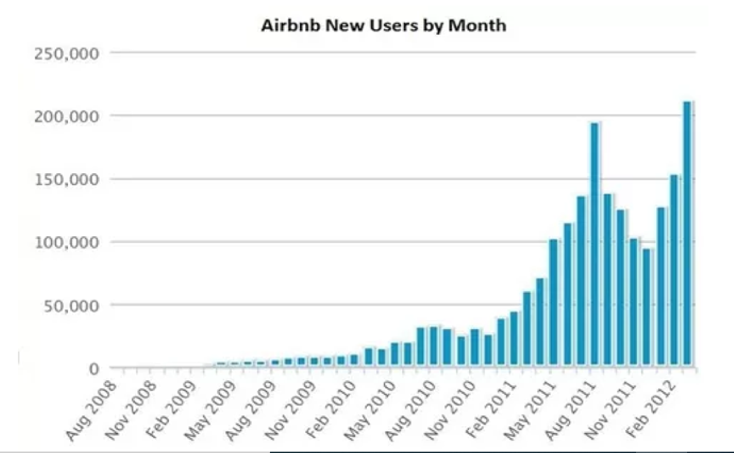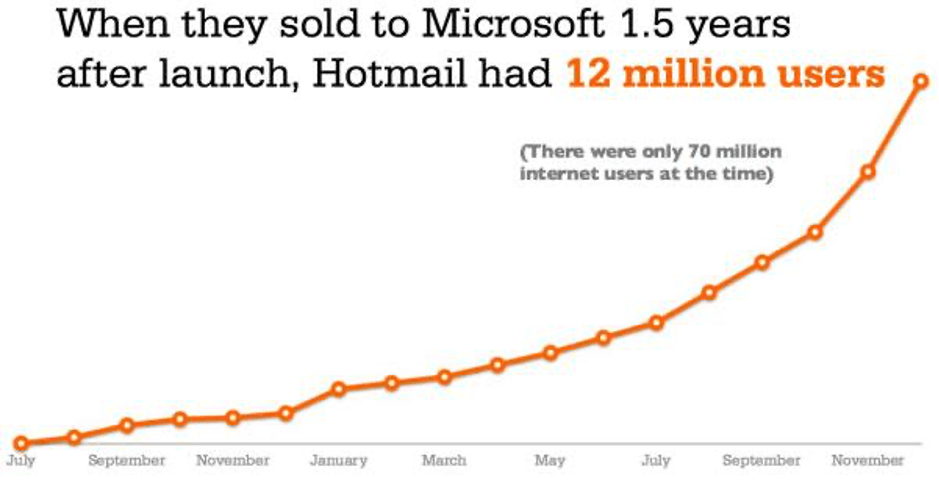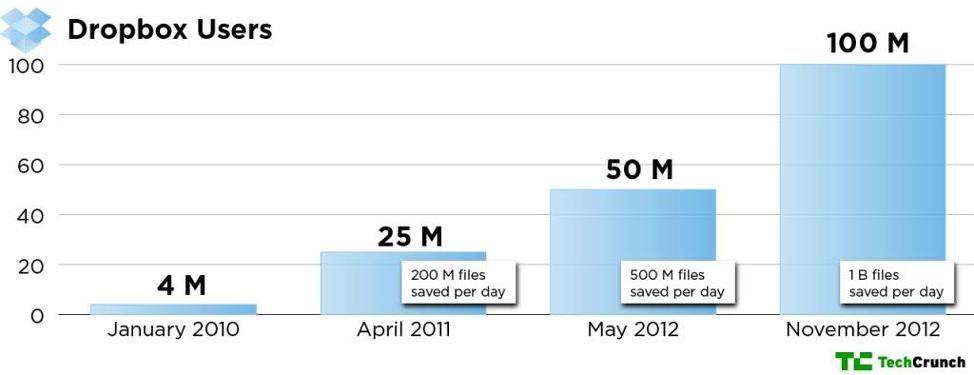As we are constantly researching everything that marketing means, we also studied big companies, such as Facebook, Linkedin, Dropbox, and Airbnb. They have not become worth tens or hundreds of billions of dollars and are still growing so fast with a single moment of inspiration.
Behind these ideas with exponential effect was a very well-developed process and a marketing approach based on measurement and testing, not on the ideas that everyone uses.

What makes these companies different when it comes to promotion is the use of the growth hacking marketing approach.
In the following, we will present the growth hacking marketing process, the same process used, with small variations, by all the companies mentioned above and which can help you to find, in a sustainable and repeatable way, the best ideas and marketing strategies for your startup.
Before you start any marketing process and, in general, before you start marketing, the first criterion you need to make sure you have achieved is the Product-Market fit or product-market fit. In other words, be sure that what you offer is what people need.
- Set goals and come up with ideas
Before we get to work, we need to know what we want, right? And you will not believe it, but in most cases, we are wrong even in this simple aspect. Why?
First of all, we set general goals. "We want to increase sales." This means that even if we have an extra sale, we have achieved our goal, but I don't think that's what we want. The problem is that if we do not have a very specific goal, it will be much harder for us to find the ideas to achieve it.
A good growth hacking goal can sometimes be achieved with a single tactic. For example, "Increase your Google Ads visitor conversion rate from 2.4% to 4%." This is specifically.

Once we have the goal, it's time to come up with ideas on how to achieve it. This is a very important step.
What we could recommend here:
a) Use brainwriting, not brainstorming. If you're trying to come up with ideas for a meeting with your team, they may all be moving in one direction. It is much more efficient to work on each one separately, do research, and then put them together.
b) Don't just focus on attracting customers. One of the mistakes we often make is that we only associate marketing with attracting customers or other goals from the beginning of the sales funnel. However, it is more efficient to focus on optimizing the conversion rate, on increasing the lifetime value of existing customers than on attracting new customers.
- Prioritize ideas
But how do we do that? How do we choose the right one for us?
In general, we should write down each idea according to 3 criteria:
a) The potential of the idea - which can be the impact on the business. Is it an idea like Dropbox, which can radically change our business or one that moves things a little, but in the right direction?
b) Ease of implementation - do we already have the logistics or resources to implement it or do we have to work hard and change a lot to implement it?
c) Our confidence in the idea - what are the chances that this idea will even have the expected impact?
Depending on the time and context in which our business is located, each criterion gains in importance. For example, if resources are limited and we need some quick gains, we go for ideas that we trust and are easy to implement. On the other hand, if things go well and we have time, it is worth investing in an idea with great potential, even if we are not sure because if it is successful, it will take our business to the next level.

- Implement measurement systems
Without properly implemented measuring systems, it's like painting in the dark. We don't know if what we're doing is right or not.
If we cannot say with certainty whether we have achieved our goal or not, we are not ready to go to the next stage. Moreover, analysis can provide us with valuable information that can lead us to change our goals.
However, measurement should not be limited to the online environment. Although more difficult, we can find ways to measure the effectiveness of marketing campaigns in the offline environment. Do you run a flyer campaign? Ask people to come with you to your store for a bonus. This way you will know exactly how many flyers your customers brought to you and how many went directly to the first trash can.
- Rapid implementation and testing
Test as many ideas as possible. You will be amazed at how often we are wrong when it comes to marketing. If you want to succeed in marketing, let the market decide which ads and messages are the most effective, stop subjectively doing this, within the team.
Write down the results you expect. Why is this important? Because, most of the time, no matter what the outcome, we will say "I knew it!". The truth is, we don't know it, but our brains have great power to find justifications and make us look good, even if only in our own eyes.
- Analyze and optimize
Some rules for this step:
a) if an idea has failed, remove it from the list;
b) if it has results below expectations, but not by much, see if you can improve it and if it is worth doing;
c) if it went as expected or far beyond expectations, double all investments in it.
If you manage to integrate this process into the organizational culture of your team, you will considerably increase your chances, no matter what kind of business you have and what goals you have set.
Growth hacking is a method you might think is new, but many companies have been using it for a long time and continue to use it to grow exponentially.
The best thing about growth hacking is that you don't have to spend a lot of resources to grow your business.
To give you an idea of how powerful this growth technique is, we have chosen the following 5 examples of the growth hacking manual, the results of which will surely amaze you.

- Netflix
Many of us don't know about it, but at the beginning of the business, Netflix was an e-mail DVD rental company. Then they decided to do something about it. And so they came up with one of the best examples of growth hacking.
The method used was quite simple. Instead of spending millions on marketing and launching the streaming platform with ease, they contacted the customer base directly from the online communities, namely through the DVD rental bulletin boards. That's how they gained 100,000 users in three months, without spending anything on a traditional marketing campaign.

- Shazam
Growth hacking is not always just a method of online marketing, sometimes you have to be innovative and offline. That's what Shazam did. For the app to identify a song, it asked users to keep their phones close to the speaker. The technique made everyone wonder why people were holding their phones in the air. In a way, it was one of the best campaigns in the history of Growth hacking applied offline.

- Airbnb
Airbnb has used a clever hacking method to increase the number of users and to achieve a significant increase in a fast way.
Airbnb used Craigslist to get backlinks and reach a large audience. Instead of investing in paid advertising or social networking, they started manually contacting the target audience for their platform. Every time someone posted on Craigslist, they would send them an email asking them to access the Airbnb platform. This was not an automated method, all the emails were sent manually and it was probably quite tiring.
But it was cheap and it worked.

- Hotmail
Hotmail is probably already forgotten, but their growth hacking strategy will never be. At a time when Hotmail was concerned about bringing new users to the network, they added a simple banner at the end of each email sent to their users.

This simple but powerful hack increased the registrations to 3,000 per day and in six months, the number of users increased from half a million to one million. When Microsoft bought Hotmail, it already had 12 million active users.
This simple, free marketing strategy has led to a growth that Gmail failed to achieve until 3 years ago.

- Dropbox
Dropbox used several growth hacking methods.
The company has selected the right platform to launch its appeal to the public: TechCrunch50 - the perfect place to apply such a method.
Founder Drew Houston has created a funny Dropbox video dedicated exclusively to Digg users, explaining how Dropbox can help users of this platform.

It brought 10,000 Digg users in 24 hours and 70,000 new users were added to the waiting list. When Dropbox was released in the final release, their program did the rest. They offered 500 MB of storage to Digg users, who accessed Dropbox. This has brought the number of active users from 100,000 to 4 million in 15 months and the number continues to grow.
